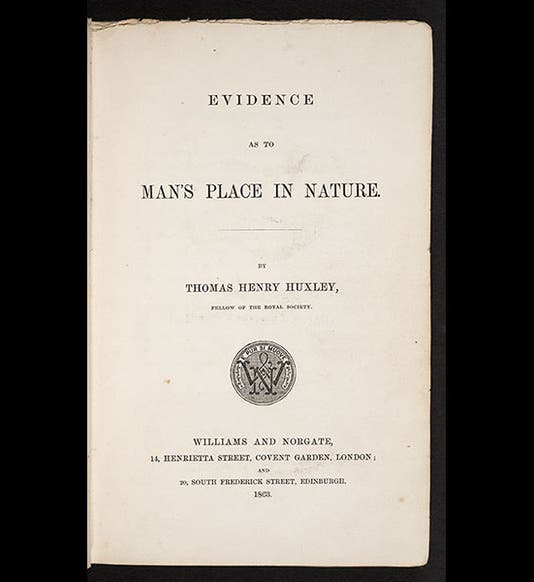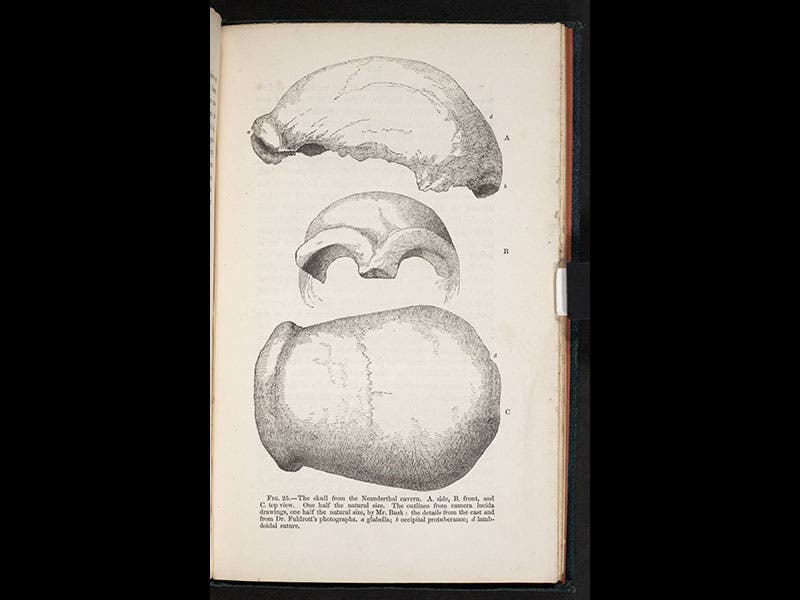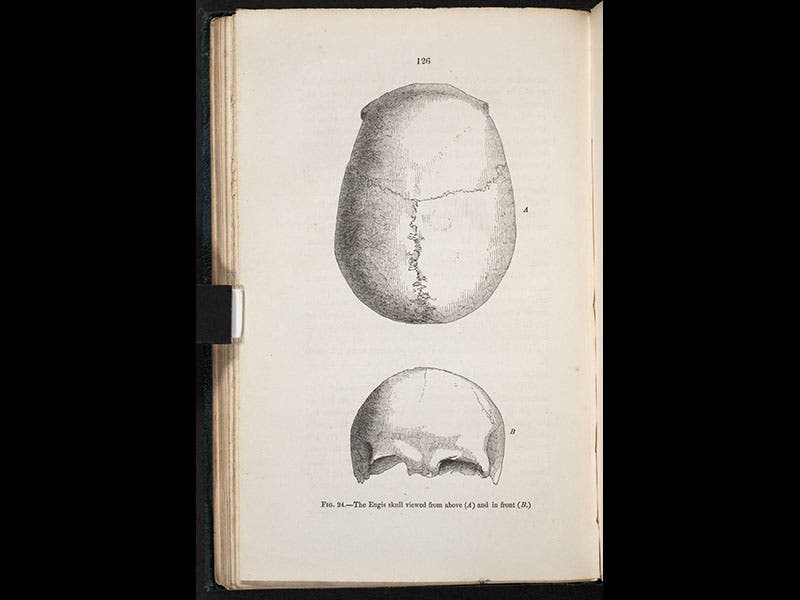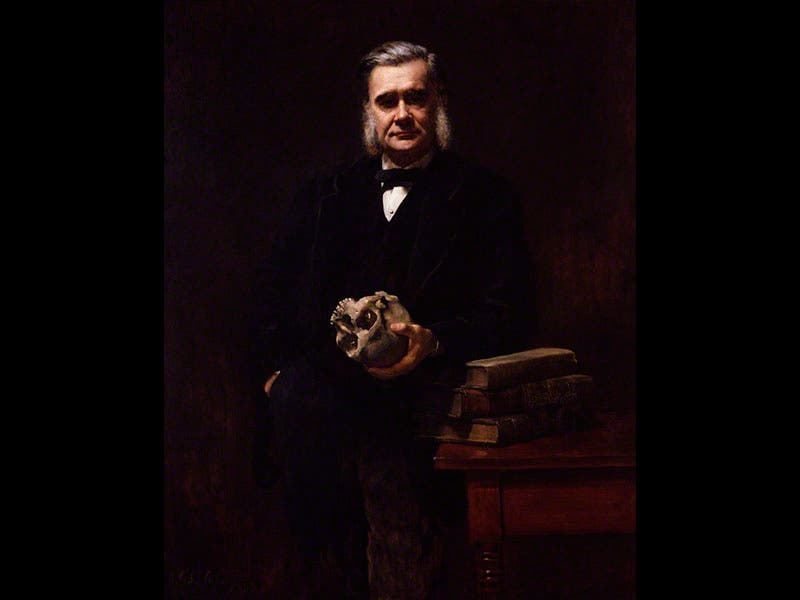Scientist of the Day - Thomas Henry Huxley
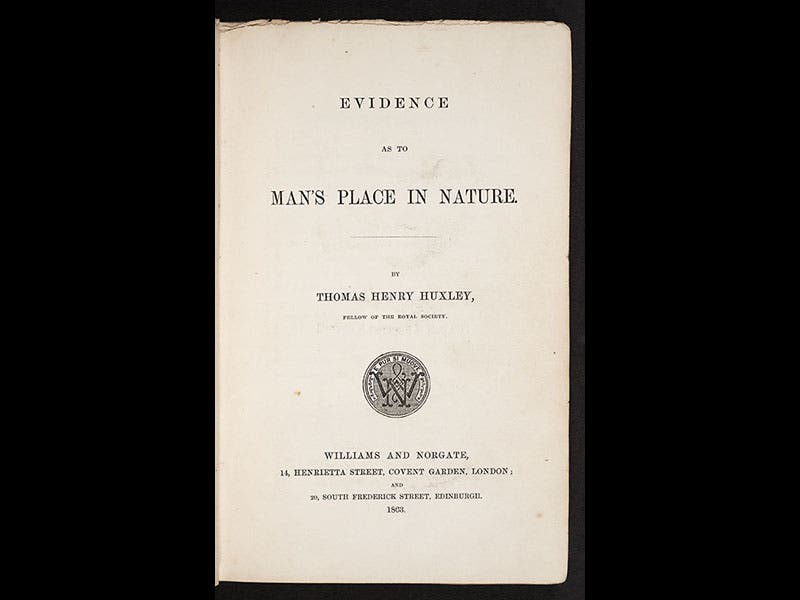
Thomas Henry Huxley, a British comparative anatomist, was born May 4, 1825. Huxley was an instant convert to Darwinian evolution after reading On the Origin of Species in 1859, and he became Darwin’s most important public defender. Moreover, he took evolutionary theory one step further. Darwin did not discuss humans and their origins in his book. In 1863, Huxley published Man's Place in Nature, which made no bones about human evolution (first image above). The book is shocking from its opening frontispiece, drawn especially for this book by Benjamin Waterhouse Hawkins (second image). Or it would be shocking, if you hadn't seen it a thousand times on book jackets and T-shirts and bottles of barbecue sauce. It is hard to imagine looking at it for the very first time, as would be the case if you lived in London in 1863 and had just purchased this book from your local shop or borrowed it from Mudie’s Lending Library. We see a gibbon (twice the size of the rest, for some reason), an orangutan, a chimpanzee, a gorilla, and a human, marching in step toward the future like one big happy family, which was exactly the point Huxley was trying to make—humans and apes are anatomically part of the same family.
The book is also novel in introducing Huxley’s readership to several human fossils that provided evidence not only for human antiquity, but also, to Huxley’s mind, human evolution. There is a drawing of the first Neanderthal skull, found just 7 years earlier in Germany (third image), and one of the Engis skull, an Upper Paleolithic specimen found in 1830 (fourth image). Huxley was thus the first to advance the idea of human evolution and amass evidence in its favor, 8 years before Darwin would do so himself in The Descent of Man (1871). We displayed Man’s Place in Nature, opened to the frontispiece, in our 2012 exhibition, Blade and Bone: The Discovery of Human Antiquity.
The portrait of Huxley, by his son-in-law John Collier, is in the National Portrait Gallery in London (fifth image).
Dr. William B. Ashworth, Jr., Consultant for the History of Science, Linda Hall Library and Associate Professor, Department of History, University of Missouri-Kansas City. Comments or corrections are welcome; please direct to ashworthw@umkc.edu.

